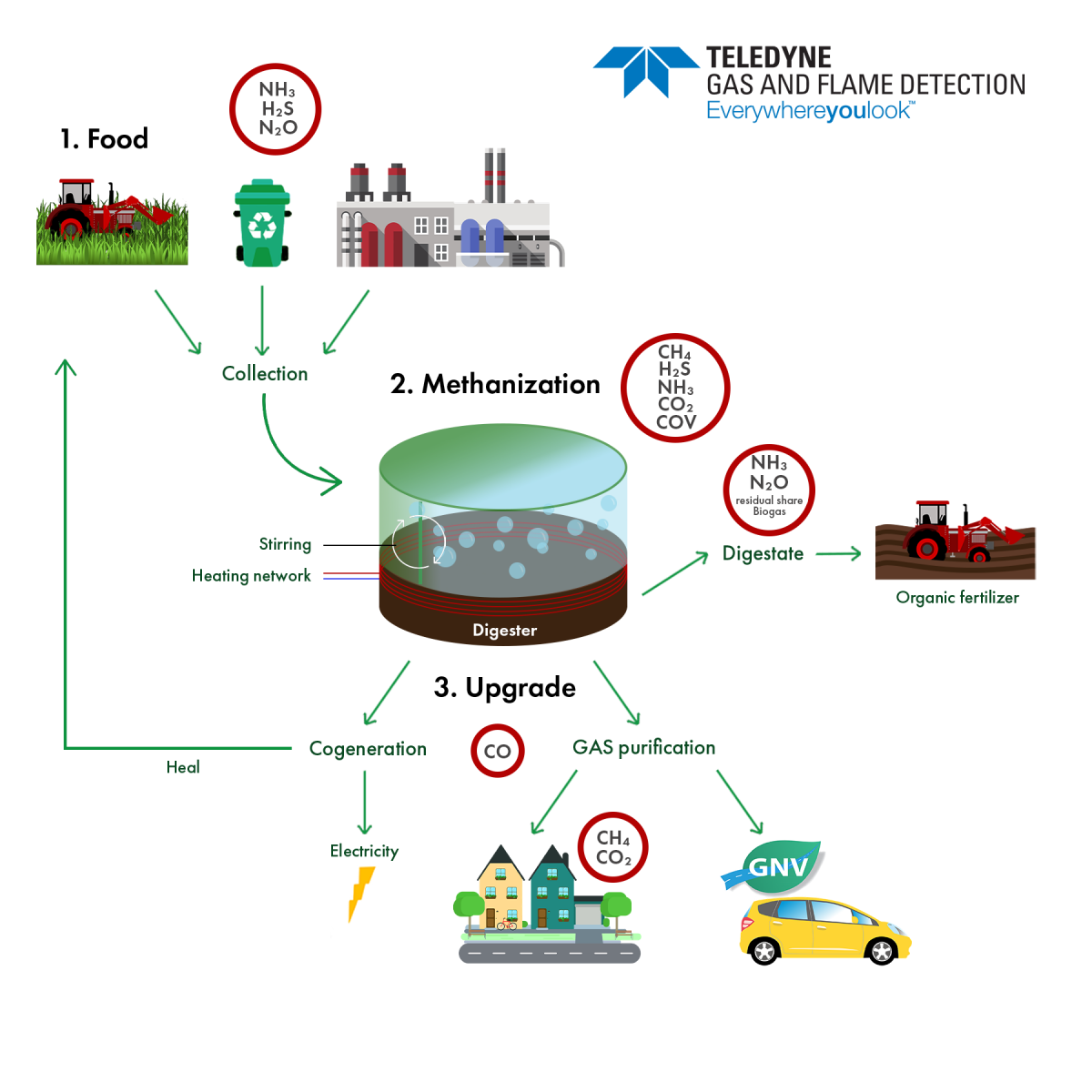Anaerobic Digestion
Methanation is a natural phenomenon that has been reproduced under industrial conditions. Due to the action of a variety of microorganisms, this is a natural biological process which breaks down animal or plant organic matter in the absence of oxygen (anaerobic). The principle of Anaerobic Digestion is based on the fermentation of organic waste.

1. Food: The management of incoming substrates
To operate, a methanization unit must be fed by different types of waste throughout the year. This waste can come from different sectors such as:
- Agricultural activities: manure, crop residue, livestock effluent...
- Communities: canteen waste, green waste, sewage treatment sludge...
- Some industries: waste from food processing plants, waste from various organic materials...
- Household waste.
2. Methanization
Once sorted and collected, the waste is sent to the methanation unit, and the organic materials are introduced into the digester. This enclosed, oxygendeprived space heats up (37oC - promoting the growth of bacteria) and ferments waste for several days, transforming it into two products:
- Biogas: renewable energy consisting mainly of methane (CH₄), carbon dioxide (CO2), water and traces of other gases. Biogas can be compressed after removal of Carbon dioxide, the same way as natural gas is compressed to CNG, and used to power motor vehicles. In the United Kingdom, for example, biogas is estimated to have the potential to replace around 17% of vehicle fuel.
- The digestate or residue: one of the substances from the methanization process is called digestate. It is used as an organic fertilizer of recognized agronomic quality, which can halve the consumption of chemical fertilizers on a farm.
3. Biogas upgrading
- Heating unit: Cogeneration (combined generation) of electricity or heat
- Purification
Biogas must be purified before injection into the natural gas distribution network. It must meet technical specifications and specific regulatory requirements. At the end of this cycle, biogas becomes biomethane, a renewable gas also called green gas that can be injected into the natural gas distribution network or used as fuel for NGV (natural gas vehicle).
